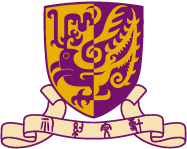目的地
雲南 (中國) Yunnan (China)
Facts about Yunnan:
| FACT BOX |
| Place | Yunnan Province, China 雲南省 |
| Origin of Name | South of the Yunling Mountains (South of the Clouds) |
| Area | 394,100 km2 (8th, 4.1% of country total); China: 9,630,960 |
| Population (2009) | 45,710,000 (12th, 3.4% of country total); China: 1,328,020,000 |
| Density | 112/km2 (24th); Chinese territory: 626.98 |
| GDP in 2010 | CNY 722 billion (24rd, 1.8% of country total); China: 39,798.3 billion |
| GDP per capita | CNY 13,494 (29th); China CNY 49,160 |
| Capital City | Kunming (also the largest city) |
| Ethnic composition | Han 67%; Yi 11%; Bai 3.6%; Hani 3.4%; Zhuang 2.7%; Dai 2.7%; Miao 2.5%; Hui 1.5%; Tibetan 0.3%. There are 24 officially recognized minority nationalities. |
| Religion | Christian, Muslim, Buddhist (Thereavada, Mahayana, and Tantric); traditional cultures are mostly animist. |
| Government structure | 16 prefectures; 129 counties; 1563 townships |
| Border countries | Myanmar, Laos, Vietnam |
Sources: Goodman, J. (2009) Yunnan: China South of the Clouds
行程安排
In summer of 2011, the Department of Geography and Resource Management (GRM) organized a field trip to Yunnan Province. The study group consists of Prof. Kwai Cheong CHAU, Mr. Kwong Chi LEE and forty undergraduate students, lead by trip leader Prof. Jiang XU and Mr. Hoi Lung LAU as the trip tutor. During the 12 days of the trip (from 30 May to 10 June 2011), we have travelled from Kunming (1,892m) to Dali (1,976 m) to Lijang (2,416m, 4,500m) to Shangri-La (3,348m) for a comprehensive study of a wide range of geographical issues. Students were required to carry out exploratory fieldwork on pre-assigned topics related to the stunning landscape and cultural richness and diversity of Yunnan.
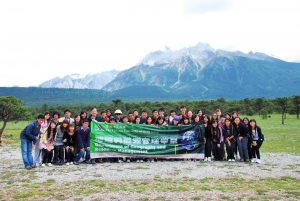
Trip Objectives
As a required in the curriculum, GRM students have to participate in two overseas field trips, which allow them to broaden their horizon and knowledge base through interactiosn with overseas students and scholars under different disciplines. Moreover, field trips provide platforms for students to plan their own study and develop their research skills.
Four key objectives of this field trip:
(1) to broaden students’ horizons and knowledge bases through exposure to a new environment,
a remote destination in Mainland China;
(2) to understand the landscape, culture, and people of Yunnan;
(3) to have a brief immersion into the trends and impacts of globalization in a remote Chinese province;
(4) to serve as an acid test as to what students have learnt from the discipline.
Academic exchange
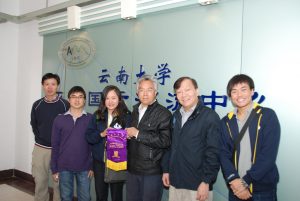
Cultural exchange
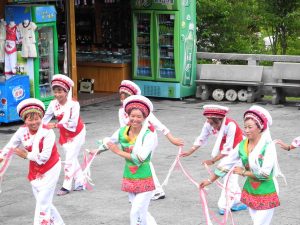
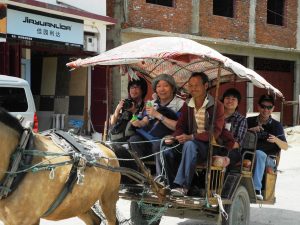
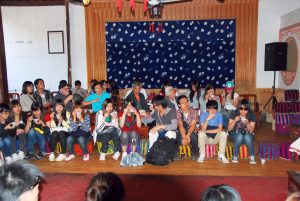
Study mode and Assessment
Students are encouraged to make early preparations for the trip in order to enhance their learning experience. Each group has to come up with a presentation on a given topic about the geography of Yunnan province. The purpose is to familiarize students with some background information of the place.
During the trip, students were required to pay attention to details and other aspects that will be explained (either by the Professors or tour guides), take notes, take photographs, interview people and get as much information as possible to fulfill their study plan.
The components of the trip assessment is listed below:
Pre-trip preparation
Reference library
Group presentation
Pre-trip engagement
Trip engagement
General (discipline, punctuality, attitude, etc.)
Group Presentation
Sharing sessions and field engagement (field recording, interaction, etc.)
Travel diary
For participation and presentation, there will also be peer assessment.
Individual field trip report
Based on your topic, you may identify a core theme, consolidate your ideas and formulate your arguments in the report. Give a title to the report and provide sub-headings, where appropriate. Avoid putting down any materials that are irrelevant to the core theme. Attention must be paid to the neatness of presentation, accuracy of concept, logical arguments and accurate references.
Are You Ready?
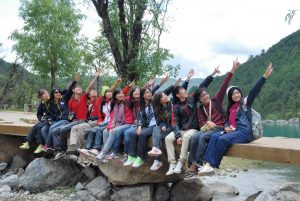
From Hong Kong to Kunming via Shenzhen
DAY 1
30/05/2011
Travel around the city, familiarize with the layout of Kunming
文化體驗
Experience Cuisine and Cultural night
DAY 2
Lectures, Dianchi and Yangzonghai Lake
DAY 3
31/05/2011
Lecture 1: World Heritage Conservation and Tourism Development (Speaker: Professor TAO Li, Yunnan University)
講座2:雲南水資源狀况、污染與治理(雲南省水利水電勘測設計院顧世祥博士主講)
Lecture 2: Water Resources, Pollution and Mitigation in Yunnan (Dr. Gu Shixiang, Water Resources and Hydropower Survey and Design Institute of Yunnan Province)
雲南大學參觀
Tour Yunnan University (The campus itself is a historical site, having tons of stories to tell)
滇池考察
A guided study trip to Dianchi
陽宗海人工濕地恢復工程示範基地
A guided study trip to Yangzonghai Wetland Restoration Project
DAY 4
Lectures, Dinosaur Valley (National Geopark)
DAY 5
01/06/2011
Lecture 3: International Rivers (Speaker: Professor He Daming, Yunnan University)
講座4:高原濕地(雲南大學胡金明教授主講)
Lecture 4: Plateau Wetland in Yunnan (Professor Hu Jinming, Yunnan University)
祿豐恐龍谷地質公園
Lufeng Dinosaur Valley (National Geological Park)
市區考察(如城中村等)
Study trip to urban villages
分享討論1:A- D
Sharing Session 1: Group A-D. Each group has 15 minutes to share their observations relating to respective task in charge.
乘坐夜臥前往大理 Night-sleeper Train to Dali
DAY 6
Erhai & The Ancient Town of Dali
DAY 7
02/06/2011
Erhai: Water pollution and mitigation & Eco-Wetland Habitat
大理古城參觀、調研及家訪
Study and survey at the Ancient Town of Dali
DAY 8
Cangshan
DAY 9
03/06/2011
Cangshan (National Geological Park) (see Appendix III-4)
A組PPT報告
Presentation 1: Group A powerpoint presentation on urban development in Kunming. (Q & A session is led by Group D)
分享討論2:B & C
Sharing Session 2: Group B & C
DAY 10
Xizhou – A Market Town of Bai
DAY 11
04/06/2011
Folk culture and architecture
居民訪談
Talk to local residents.
乘火車前往麗江
Take train to Lijiang
DAY 12
Lijiang – exploring its surrounding heritages
DAY 13
05/06/2011
Jade Dragon Snow Mountain (National Geological Park)
體驗東巴文化
Experience Dongba culture
束和古鎮:茶馬古道上的小鎮,考察茶馬古道遺跡
The Ancient Town of Shuhe
麗江古鎮:自由活動時間
Free time at Lijiang
DAY 14
The Ancient Town of Lijiang
DAY 15
06/06/2011
Guided tour of the Ancient Town of Lijiang
學生分組就各自負責的專題進行調研
Study and survey at the Ancient Town of Lijiang
B組PPT報告
Presentation 2: Group B presents their findings about the Ancient Town of Dali. (Q & A is led by Group A)
C組PPT報告
Presentation 3: Group C presents their findings about the Ancient Town of Dali (Q & A is led by Group B)
分享討論4:A - D
Sharing Session 4: All groups share their observations and findings on Lijiang, and discuss the difference between Lijiang and Dali.
DAY 16
On the way to Shangri-La
DAY 17
07/06/2011
Check-out hotel at Lijiang
參觀石鼓鎮與長江第一灣
Visit Shigu Town and the First Bend of Yangtze River
參觀虎跳峽
Tiger Leaping Gorge
藏民牧場
Tibetan Ranch
自由活動
Free time at Shangri-La
DAY 18
Shangri-La: Napa Lake and Dukezong Town
DAY 19
08/06/2011
Napa Lake Natural Reserve: alpine lake and subtropical alpine swamp
松讚林寺:雲南最大的藏傳佛教寺院
Songzanlin Monastery
獨客宗古城(茶馬古城驛站、藏式民居、月光之城)
Dukezong Ancient Town
D組PPT報告
Presentation 4: Group D presents their findings about the Ancient Town of Lijiang. (Q & A session is led by Group C)
分享討論5:A & B
Sharing Session 5: A & B
DAY 20
Shangri-La: Pudaocuo National Park
DAY 21
09/06/2011
分享討論6:C & D
Sharing Session 6: C & D
飛囘昆明 Fly to Kunming
DAY 22
Kunming and Fly to Shenzhen
DAY 23
10/06/2011
Student Sharing
Presentations of Students
The topics for group presentation are as follows:
The extraordinarily rich natural resources and landscape 自然地理特徵與自然景觀
Plateau lakes and plateau wetlands 高原湖泊與濕地
Water resources, pollution prevention and mitigation policies/projects 水資源與水污染治理
World heritage and cultural conservation 世界文化遺產與保護項目
Tea-Horse Road 茶馬古道
International rivers and regional conflicts 國際河流與區域衝突
Socio-economic growth under globalization 全球化下的經濟社會發展
Urban and regional transport 城市與區域交通
Reflections and afterthoughts of students
劉美芳
More陳鋒
More陳燕湘
More區稀汶
More崔敏瑩
More繆嘉珠
More莊丹妮
More阮程欣
More馬穎嫻
More黃善如
More鍾璟霖
MorePresentations of Students
The topics for group presentation are as follows:
The extraordinarily rich natural resources and landscape 自然地理特徵與自然景觀
Plateau lakes and plateau wetlands 高原湖泊與濕地
Water resources, pollution prevention and mitigation policies/projects 水資源與水污染治理
World heritage and cultural conservation 世界文化遺產與保護項目
Tea-Horse Road 茶馬古道
International rivers and regional conflicts 國際河流與區域衝突
Socio-economic growth under globalization 全球化下的經濟社會發展
Urban and regional transport 城市與區域交通
Reflections and afterthoughts of students
劉美芳
「今天一早就聽了兩個雲南大學教授的演講,真的很精彩,無論是學術上或是對認識這個地方來說,都令我有很多的得著!今日我們還到市區考察,看看經常聽到的城中村。在以前上堂時已經對城中村了解很多,但親眼看到都仍然覺得不可思議,真是名副其實的握手樓!雖然住在這裡都是比較貧窮的人,但是又看得出他們在這裡生活很滿快樂。在我們考察當中,不少小朋友在我們身邊走來走去,臉上更是掛著大大的笑容,可能鮮有大批外人進入,他們見到我們更覺新奇。仔細觀察,發覺這裡並不是我們想像的這麼差,相反更似一個自給自足的小社區,裡面不乏基本的服務設施,如診所、娛樂店舖等,不難發現他們住在這裡開心滿足的原因。有人常爭議應否清拆城中村,但我反而認為應該要保留,這種地方文化及生活方式都是城中村獨有的,更加是當中市民重要的依賴,絕不是說拆就可以拆掉的呢,正如我們香港珍而重之的圍村文化。」
陳鋒
「下午下雨了,在滇池有一些遊客、拍攝婚照的新人和我們這些專程來看污染的中大同學。不確定他們對滇池的污染情況是否了解或者在乎,在那里也看不到任何有關污染或水質改善工程的事,我看過的旅遊書、攻略也沒提到滇池受污染的事。對來遊客或做遊客生意的人來說,滇池依然是個重要的遊客景點。臨走時看到一個遊客隨手把煙頭丟到池水裡去,然後和家人在滇池前開心合照……
之後去了陽宗海,一個受嚴重砷污染的湖泊。我們去了一塊濕地緩沖區,那裡種了很多植物,用來它們吸收泥土裡的氮、磷,及一些重金屬和有害元素(如砷),以減低來自農業和住宅排水的污染。可是緩沖區目前處於半荒廢狀態,野草和其它植物都沒有收割就枯萎,結果吸收了的污染物又重新回到濕地的泥土。」
陳燕湘
「不過在昆明這個城市仍有其可愛之處。在這兒能夠感受到社區的歸屬感。河邊有一個很大的圓形廣場,有很多街坊在那兒一起跳舞。看著他們個個都很開心,很融洽,令我都感到這個小區的溫暖。我們從一個街坊得知,每天晚上八點至十點都會有街坊在這兒跳舞聯誼。這兒令我想到了的住的地方,天水圍。在別人眼中它是一個「悲情城市」,但我認為不。假如天水圍的臭河晚上都會有街坊一起跳舞聯誼歡樂,天水圍在外人眼中一定不再會是一個所謂的「悲情城市」了。」
區稀汶
「早上在參觀洱海途中,順便要了解洱海在雲南省的旅遊業所扮演的角色及其重要性,訪問了導遊先生,我深深明白到一個道理──大自然由天賜,大污染是人為。洱海曾幾何時由於因為當地的農業以及生活污水大量排放而使水質素下降至四類,甚至不能飲用。現在洱海又變為二類水,主要原因是當地政府開始明白保護水資源的重要性,沒有水,人不能生存。而且在世界上,可用的淡水資源愈來愈少,如果連雲南省境內的第二大湖泊都受污染,雲南的日常供水將會變得更為緊張。
不過有時我反而在想,人是否一定要經歷過災難才學懂珍惜。例如地震後才懂得珍惜身邊的人,生命。失去了的冰川才明白減慢溫室氣體的排放的急切性。如果人類及我們要去到失去了才明白當中的意義,可能已經是太遲了。保護環境是我們世世代代的責任,也是我們來這里考察的其中一個目的的所在。」
崔敏瑩
「蒼山之行是今個考察的重點之一。我們吃過早餐便乘車到蒼山去。以前一直擔心著會有高山反應,所以我和其他同學都在前一晚吃了高山藥。到了公園入口,我們便爬了好幾十級樓梯到纜車入口。還未正式到達起點已感到有點氣喘。我,還能撐到終點嗎?搭過十來分鐘的纜車便到達清碧溪。這裡的水清激得很。溪水的碳酸鈣作用整體看起來碧綠如玉。我真的覺得很好看呀!期後,長達十三公里的棧道之行也從這裡開始。沿路上,我們可觀察到二千米以下的地方都是人林種植的松樹種類,而二千米以上的地方是原生林。人工林和原生林最大的分別是在於其生物多樣性。由於二千米以下的地方的樹木有昔日大多都被砍去用作生火,所以現在在那裡看到的松類植物都是期後才種植的。政府採用松類植物為主是因為松樹的耐旱性較強,而它驚人的生長速度亦有助次生林的成林速度。二千米以上的地方,我們可看到較多苔蘚植物。其生物多樣性亦較二千米以下的地方為高。我們隨處看到著名的雲南杜鵑呢!走畢十三公里多的棧道,我發覺蒼山是一個很好的考察地點。它那棧道令遊人能用最直接的方法去了解蒼山這地方。由不到二千米的地方一直走到二千六百多米的地方,那循序漸進的行走方式能讓遊人一邊欣賞沿途風景,一邊了解不同海拔的獨特性。考察的尾段所乘坐的架空索道將整個蒼山之行劃上完美的句號。」
繆嘉珠
「早上去了喜洲,看到較正宗的民族舞,又喝了三道茶,近距離觀賞,銘記在心。第一次坐馬車,馬仔一路走,一路回頭偷望,一路拉屎,雖然很精彩,不過心有點痛,因為很殘忍。難得坐馬車,謹謹記著一路的風景,沿途的田呀水稻呀都在我心中。另外,如果不是被要求分享喜洲市集,光看那個地方,還真看不出這是一個市集,口述歷史真的重要。」 繆嘉珠
莊丹妮
「昨晚的麗江古城並不是我想像中的那樣,決定今天早上要出去闖一闖。清晨六時多就起床,迎接的是紫色金黃色的雲霞,走進古城,沒有擠擁的遊人,頂多是趁早晨離開的旅客,有居住在城裡的居民來來去去,有的走路有的踏車,店鋪都還沒有開,只有暗紅色的木門緊閉著和門頂的牌匾和東巴文寫的對聯。早晨的溫柔的陽光灑在光滑的五花石上,是遊人是住民亦是以前的馬幫走過的痕跡。古城裡小巷的寬度原來都有考究,闊點的是兩架馬車加兩個馬夫能一起並肩走過的距離,窄一點的是一架馬車加一個馬夫能走過的距離,再窄一點的是兩個人能並肩走過的距離,而且轉角都是圓的,方便馬車,上下橋的是坡路不是台階,亦是因為方便馬車,所有的小路都能通向四方街,那是買賣交易休閒娛樂的中心。這裡是茶馬古道的重要一站。
因為他的過去、他的瓦屋頂、木框窗戶、紅燈籠、五花石路、流水、樓梯、陽光、這裡的清晨的寧靜和那納西族嬸嬸熱情燦爛的笑容,我想我是喜歡這個地方的,這才是我想的古城的樣子,縱使他將會變成擠滿旅客的酒吧街,或是賣一樣的圍巾裙子飾物播一樣音樂的手信街,麗江古城還是有我喜歡他的地方。你呢?你會喜歡這個古城嗎? 」
阮程欣
「一直為這一天期待著,卻又要按捺著心中的興奮和緊張,怕想太多想到高山反應來襲。玉龍雪山是橫斷山脈的名山是第四紀中抬升所形成的石灰岩褶皺山,索道上而清晰的看見大自然的力量擠壓出來的褶紋。也看到冰川的盡頭冰舌正逐步被蠶食、後退。白雪混和著黑色的塵埃和污染物較吸熱,加速了冰雪的融化,看著雪水在流,我幻想著這是她為人類淌的淚。4500米的雪山上,飄著雨和霧,好不容易看到主峰扇子陡,連忙記下她是在5596米上聳立的姿態,可惜往雲杉坪的路在維修未能看到最美的景觀。望著都穿紅衣的人群,好像跟雪山很不搭調,人多得擁擠,我又在想究竟人類在大自然裡的角色是什麼?」
馬穎嫻
「午飯過後,我們去到了茶馬古道上的另一個重要古鎮—束河古鎮。這里不像麗江那樣商業化,這里有自己的獨有的特色。在這里,我們還可以找到一點屬於茶馬古道的文化,參觀茶馬古道博物館可以令我對茶馬古道的起源、發展有多一點了解,令我對馬幫的生活有多一份了解,而且還可以看到一些馬幫用過的物品。
在這里,你可以體驗到古城熱鬧的一面,也可以體驗到古城安靜的一面。在這里,你可以看到古城內居民的生活,也可以看到公公、婆婆穿著傳統的納西族服飾在街上走。這里與麗江不同的是,它是有居民生活的古城,它是有靈魂的古城。」
黃善如
「到「納帕海」卻不見海,乾旱的氣候令納帕海的水體面積退到更遠的地方。連「草原」內的河道也枯乾,只見龜裂的痕跡。
常言道:「風吹草低見牛羊」,但在納帕海的「草原」草低得不用吹,也見牛羊一大群。地上的茜草稀少,疏落地分佈。這一草地以單株植物茜草為主,不禁令人有點擔心它的承載能力。
能夠看到一大片草地,實在難得,在這片一望無際的草地上,卻看見了一些問題,草的密度低,其高度亦矮;牲畜及人類踐踏土壤,水土流失。(荒漠化問題)」
鍾璟霖
「普達措國家公園的美景,令我對香格里拉的失望大為減少。這個中國第一個符合世界標準的國家公園,在設計和管理上亦有不少令人刮目相看之處。
第一,棧道主要沿著湖邊鋪設,不破壞原有的風景線;在跨越草甸之處不設圍欄,令動物可自由橫過,不因棧道而被影響生活;在風景較美之處會特別擴闊為觀景平台,有限度地讓旅客親近美景,同時減低了植被受嚴重踐踏而遭破壞的幅度。
第二,沿途洗手間充足,在人流較多之處更設有由旅遊車改裝而成的流動廁所。與蒼山上的洗手間相比,其潔淨度有飛躍般的進步。不過,遊覽當天部分洗手間無水供應,令我們大感不便。另外,雖然廁所標榜環保,卻以塑料袋盛載排泄物,實在令人費解。
第三,指示牌清晰明確,笑掉牙的中式英語終於不見了。無論是國家公園還是其它各種各樣的保護區和旅遊點,其中的一事一物,都是中國的形象的體現。外國有不少地方都提供通順的中文指引,為何我們卻不能以英文做到?大國的形象,不是靠在時代廣場播幾段宣傳片就能建立的。」
